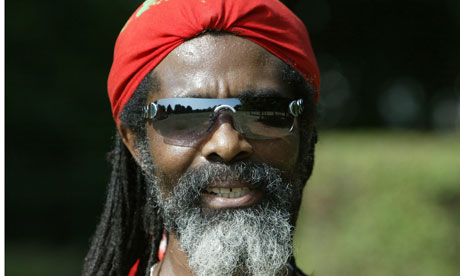
Dr Alfio V Parisi and his team stuck beards and moustaches on some dummies, put them out in the hot, hot sun, and measured what happened. They did this after they had run a related experiment with toupees – a trial which itself was preceded by years of painstaking work with tree leaves, automobile windows, adolescent girls, lawn bowlers and snorkelers.
Parisi and his various collaborators have now published more than 150 scientific reports about what's most dangerous – and what's maybe a little less so – for people who expose themselves to daylight.
Ultraviolet radiation, also known as UV or UVR, provides much of the health danger that comes from the sun. UV is a portion of sunlight (or light from any source) that's of higher frequency and shorter wavelength than the colours our eyes easily recognise.
Last year, Parisi and three colleagues at the University of Southern Queensland published a rakishly titled study, Dosimetric Investigation of the Solar Erythemal UV Radiation Protection Provided by Beards and Moustaches, in the journal Radiation Protection Dosimetry. They explain there, as they do elsewhere, frequently, that "Australia has one of the world's highest incidences of UVR-related conditions and illnesses". Melanoma – skin cancer – is perhaps the most famous of those ailments.
The scientists obtained three lifesize mannequin heads, adorning one with a long beard, one with a short beard, and the other with only facial hair. On each dummy head they fixed tiny UV dosimeters (a device that calculates how much UV radiation has arrived on a particular spot over a specific period of time) and mounted the dummies upright on a rotating platform exposed to the sun.
The researchers concluded that: "Although protection is provided by the facial hair, it is not very high and the presence of facial hair should not be taken as a reason to spend extended periods of time in sunlight."
Their hairpiece piece, called Solar Ultraviolet Protection Provided by Human Head Hair, appeared in a 2009 issue of the Journal Photochemistry and Photobiology. It made use of a single mannequin head, equipped at different times with "hair pieces made of real human hair of two distinct colours [grey and brown] and two hair lengths (short and long)".
They concluded that hair protects the scalp only to a limited degree. And they report a surprise: the protection "provided by the shorter hair was generally higher by a range of 2-5 than that provided by the longer hair.
"The reason for this is that with the longer hair, there is more parting of the hair, which results in a greater surface area of the scalp susceptible to sun exposure in comparison with the shorter hair, which tends to be more upright."
• Marc Abrahams is organiser of the Ig Nobel prizes. Look out for a live webcast of this year's Ig Nobel ceremony on 12 September on theguardian.com

